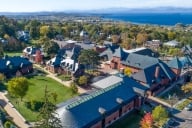You have /5 articles left.
Sign up for a free account or log in.
My daughter came home from school with a slick science fair booklet last Friday along with a homework assignment to begin initial explorations into the topic she had chosen in class: “Do different colors of light change how plants grow?” She is excited. This is her first year doing a science fair project. I’ve never done one either, and I’m impressed at how much parents are encouraged to assist with carrying it out. At back to school night, the teacher passed out a science fair booklet written for parents, and discussed at length the importance of supporting this project at home. Well, we thought, with advanced degrees in biology that shouldn’t be too hard.
Friday night, after my daughter went to bed, my husband (also a biologist) and I had a science fair project pow-wow. It started with us thinking about what kinds of seeds would be best to use for this kind of experiment. I wanted to make sure that we could order seeds online with enough time to do the experiment, since the last time we were at the garden shop they had a slim selection (being winter and all…). And our conversation grew from there. Soon, our simple Google search for seeds turned into full-fledged research. How many seeds she would need required us to look into sample size and numbers of treatments. This easily flowed into a discussion of experimental design. Before we knew it we had dug up all sorts of scientific papers describing plant experiments. We discovered that while growth in many seed types is not affected by wavelength, far-red light does inhibit germination in lettuce seeds. A discussion of how we could separate far-red wavelengths from red light ensued. We started talking about pilot experiments, measurements, statistics, controls.The project pulled us in, the complexities exciting to think about collaboratively. But WAY beyond fourth grade level.
It is clear that my daughter’s science project will not be a superficial experiment. With two academically trained biologists for parents (who have spent much of our lives working on our own experiments as well as leading college students in designing, carrying out and analyzing science experiments) and solicitation for parental help coming strongly from her teacher, my daughter won’t be shining lights on seeds willy-nilly. We will make sure that the process is done right. At the same time, it’s going to be a learning experience for all of us – my husband and I will be learning how to simplify and restrain ourselves from the rigorous completeness we would otherwise throw into this kind of project, and figuring out what expectations are appropriate, while still retaining the integrity of the scientific process. We need make sure we can express our enthusiasm without overwhelming our developing scientist, so that even if she doesn’t decide to pursue a career in science, she will have a healthy respect for, enjoyment of, and understanding of the process.
A different facet of the complex challenge of balancing academia and family.





